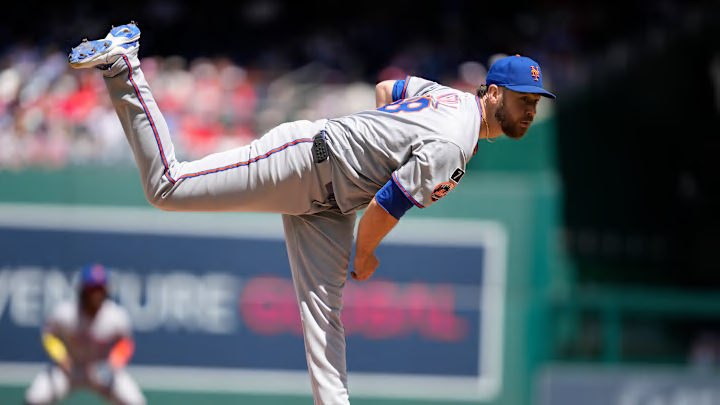Against all odds, the New York Mets' pitching staff has put together their best performance just over a month into the season, boasting the league's best WAR by a margin, an ERA around 2.60, and elite swing-and-miss ability with a K/9 near the top five in the league and a wOBA in the top 10% of MLB.
Among the pitching staff, the starting pitching has been the big surprise this season. After replicating last season's experiment, the starting pitching has been excellent this year, posting an ERA that leads all of MLB. These results are supported by some metrics that show optimism about maintaining this level this season, but there is one statistic that raises concerns about a possible regression moving forward.
Mets' pitching limits home runs at a historic rate
The Mets currently boast the lowest home run-to-fly ball ratio in MLB at 6.5%, a mark unmatched in the past 11 seasons. This ability to suppress home runs is intrinsically linked to their elite ground ball rate, currently exceeding 47%. By inducing a high volume of ground balls, the Mets' pitchers minimize opportunities for hitters to elevate the ball and make impactful contact. Consequently, the limited number of fly balls significantly reduces the likelihood of home runs and overall run production against them.
Mets' pitching results are not due to "good luck"
In small sample sizes like the ones so far this season, it's common to overreact to positive results and metrics because a regression can occur at any moment. However, the Mets' team ERA suggests that this result is due to more than just good luck. If you look at Fielding Independent Pitching (FIP), which focuses solely on the events a pitcher has the most control over, it is at a level very close to the total ERA. This means that the pitching staff's efficiency doesn't come from factors such as help from the defensive side but is more closely tied to what the pitcher can control.
This is supported by the fact that the Mets' pitching staff is the third-best team in MLB in terms of K/9 ratio, and their BB/9 level is better than the league average, something not seen last season. This strikeout rate demonstrates the pitchers' ability to generate outs on their own without the help of the defense.
Mets' pitching at risk of regression if it doesn't limit hard-hit contact
From an analysis of advanced metrics, it's surprising to think that a team with a historic HR/FB ratio, a high ability to generate strikeouts, and, above all, the lowest barrel% in MLB according to Baseball Savant, is at risk of experiencing a regression in its pitching due to hard-hit contact allowed. So far this season, the Mets' hard-hit contact rate is above 47%, ranking third worst in this category with an average exit velocity of 90.1 mph.
This high hard-hit rate hasn't yet translated into poor results primarily due to the staff's exceptional ability to induce ground balls, preventing hitters from elevating the ball for damaging extra-base hits. As long as the Mets' pitchers consistently keep the ball on the ground, they can mitigate the risk posed by hard contact. However, if opposing hitters begin to square up these hard-hit balls with a higher launch angle, the consequences for the pitching staff could be severe.
Although there are inherent risks, based on advanced metrics, for the Mets' pitching to begin to regress, there are factors that support and sustain this level of performance of the Mets' pitching staff. The surprise of the starting pitching, the arrival of support to the pitching staff with the possible return of Sean Manaea to the rotation or Dedniel Nunez to the bullpen could be other factors that make this pitching staff the best in MLB.
